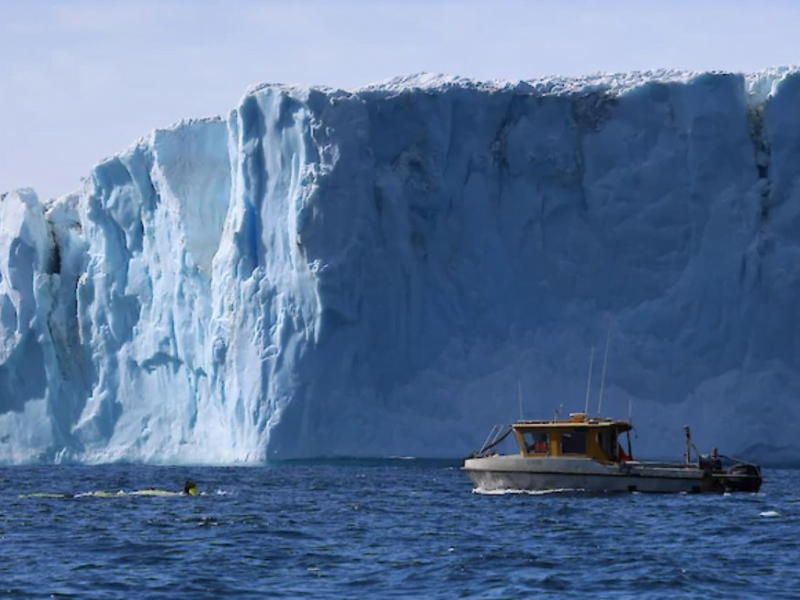Drones and autonomous vehicles will soon be deployed to Antarctica to aid the Australian Antarctic Program’s study of whales and geophysics, allowing for the collection of data otherwise inaccessible to humans.
The Department of Climate Change, Energy, the Environment and Water is also looking to trial the use of uncrewed surface vessels for data collection to “deliver strategic science outcomes and meet our Australian Antarctic Data Centre data requirements,” according to an approach to market published last week.
Working on a six-month secondment since October 2022, former Queensland University of Technology Centre for Robotics director Professor Peter Corke is working with the Australian Antarctic Program to identify the best applications for the robotic technology.

“In terms of science, primarily the robots would be taking sensors to places that are important for understanding the state of the Southern Ocean or Antarctica,” Professor Corke said.
“This could include places where it’s dangerous or impossible for humans to take them, such as under the ice. Or it could be places where it’s more cost-effective to send a robot, such as collecting data from a penguin-monitoring camera or a whale acoustic mooring.
“In other operational areas, robots could be used to move people or supplies over the ice, to move equipment and supplies around a warehouse, or they could even help in the kitchen or with maintenance.”
Under the Coalition, $60.6 million was committed for “drone fleets and other autonomous vehicles able to map inaccessible and fragile areas of East Antarctic, establishing an ‘Antarctic eye’ with integrated censors and cameras feeding real-time information”.
Potential uses include:
- Drones for whale tagging and tissue sampling
- Autonomous ground vehicles for soil sampling, or travelling to and servicing remote camp sites
- Autonomous aerial vehicles for long-range geophysical surveys of the ice sheet
- Underwater vehicles to survey beneath the sea ice, or upload data from seafloor moorings
- Automated image analysis of seabird nests, and fish ear bones
- Inspection and cleaning of infrastructure, such as fuel or water tanks
Robotic technologies already being used by the Australian Antarctic Program include remotely operated vehicles on the seafloor, automated weather stations, and remotely operated cameras for penguin monitoring.
Professor Corke is the chief robotic scientist of automation startup Dorabot and was formerly the director of the Australian Research Council Centre of Excellence for Robotic Vision.
In 2021, he also helped developed a robot prototype for use on the International Space Station and the Lunar Gateway space station when it becomes operational.
“My space station project has interesting parallels to Antarctic stations,” Professor Corke said.
“Astronauts, like Antarctic expeditioners, are expensive to look after, and have limited time to get important work done. So if you can use robots to do things like tote cargo, you free them up to do higher value work.”
Last week, the government began tendering for a supplier to provide and operate an Uncrewed Surface Vessel for an initial trial between October 2023 and March 2024. If successful, a second trial will take place in the 2024-25 financial year.
It intends to help “expand [Australia’s] presence in Antarctica whilst minimising our environmental impact”, including the establishment of autonomous monitoring and research capabilities which is a priority of the federal government’s Australian Antarctic Strategy and 20-year Action Plan Update.
Proposals are open until January 31, with the contract expected to begin in February and run to June 30, 2024. An option to extend the contract for 12 months will also be available.
The Antarctic strategy and action plan update were released by the former Coalition government last February, and were accompanied by a funding commitment of more than $800 million over a decade.
At least some of the funding will go towards the creation of a digital twin known as the integrated digital East Antarctica hoped to become a “globally authoritative digital model of East Antarctica”.
Other measures, committed over five years from 2021-22, include the $60.6 million for drone fleets and other autonomous vehicles and $17.4 million for “marine science and state-of-the-art research facilities to strengthen Australia’s leadership in scientific exploration in Antarctic,” according to the 2022-23 federal Budget.
Do you know more? Contact James Riley via Email.

